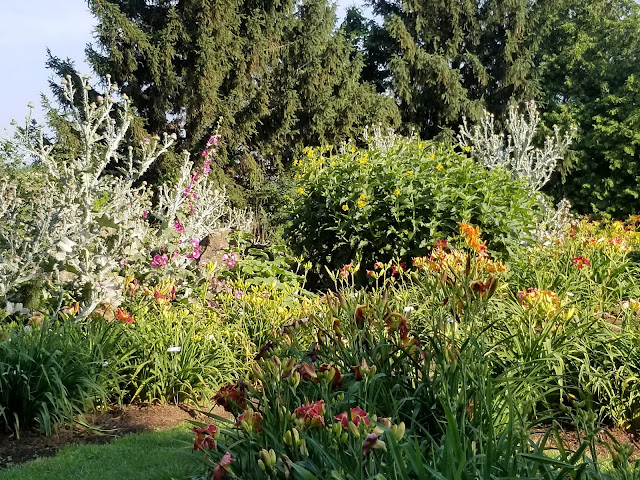D is for Drosera
Sundews are one of the largest genera of carnivourouse plants will over 190 species. They can be found on every continent except for Antarctica. Sundews like all carnivorous plants, live in soil with very little to no nutrients. This lack of nutrients is what has necessitated the carnivorous behavior of these plants. They use a sticky trap to catch their prey. One the insect dies, the enzymes the plant secrets digests the food and the nutrients are absorbed by the leaves.
Drosera flowers are held high above their leaves making them noticeable to pollinators. They can reproduce a lot of seeds and are usually self pollinating. Once you have Sundews, you will usually always have Sundews. We will often find them in other pots in the carnivorous collection.
Like all of the other carnivorous plants, our Drosera are kept in the greenhouse year round. They are potted in a peat and perlite/vermiculite mix and kept in cement mixing tubs. This allows us to maintain good moisture for the plants (Also important). Due to their "alternative feeding methods" they need water that doesn't have minerals in it. There are a few different ways to get this type of water. You can buy it at the store. You need to check the label, because drinking water typically has added minerals to make it taste good. Some folks use the condensation off of their dehumidifier or air conditioner. We have a reverse osmosis system that produces all of the water we need and then some.
Carnivores plants are LOTS of fun! In some ways it's like having a plant as a pet. We love sharing information about these interesting and different plants, so if you have questions, or have thought abut picking up one at the local big box store (they are typically sad looking, but will often bounce back with proper care) we would love to chat!






They are fascinating plants, especially when viewed close-up, Rebecca! I've yet to collect any but there will probably come a day...
ReplyDeleteThey really are interesting plants!
Delete